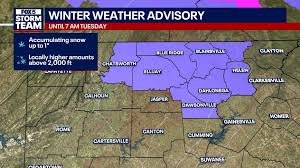
The New Climate Reality: Why Global Warming Projections Paint a Dire Future Beyond 1.5°C
Imagine a world where bustling megacities are submerged beneath relentless seas, where majestic mountain peaks stand barren, stripped of their ancient glaciers, and where vast ice sheets crumble relentlessly into the ocean. This isn’t a scene from a dystopian blockbuster; it’s the increasingly likely new climate reality we’re accelerating towards, according to the latest, sobering scientific assessments.
For decades, scientists have issued warnings, but recent reports underscore a critical shift: the urgency of the climate crisis is escalating, and its most devastating impacts are materializing far sooner than previously anticipated. Despite three decades of global climate action, the world is now teetering on the brink of catastrophic warming, with the aspirational 1.5 degrees Celsius limit of the Paris Agreement now largely deemed out of reach.
Beyond the Brink: New Global Warming Projections
A flurry of comprehensive reports released over the past month has painted a stark, plausible portrait of our future. The collective message is clear: while past efforts have somewhat curbed the most extreme warming scenarios, they are woefully insufficient to prevent a perilous trajectory.
- The International Energy Agency (IEA) recently concluded that the critical 1.5-degree pledge has ‘slipped out of reach.’ Our planet’s insatiable demand for energy, still heavily reliant on fossil fuels, is driving us away from this vital target.
- Similarly, the United Nations’ annual Emissions Gap Report found that if governments fulfill their current pledges, the world is on track for a harrowing 2.3 to 2.5 degrees Celsius of warming this century. Should these pledges falter, we could face a terrifying 2.8 degrees Celsius, with a 20% chance of breaching 3 degrees.
While some measure of success can be acknowledged—in 2015, the world was headed for 4 degrees of warming—this progress is dwarfed by the immense challenge ahead. As climate scientist Kim Cobb of Brown University notes, ‘we have replaced enough fossil fuels with clean energy to dramatically reduce climate risks in a single lifetime,’ yet humanity remains ‘careening toward an untenable future.’
A World Transformed: The Impacts of 2-3°C Warming
The global average temperature has already risen by approximately 1.4 degrees Celsius (2.5 degrees Fahrenheit). This modest increase has already unleashed unprecedented extreme weather events, from the deadly Pacific Northwest heatwave of 2021 to devastating wildfires across continents. But what does a future with 2 to 3 degrees of warming truly entail?
Irreversible Tipping Points and a ‘Catastrophic’ Future
Climate scientists like Daniel Swain from the University of California Agriculture and Natural Resources categorize a 2- to 3-degree-warmer world as nothing short of a ‘catastrophe.’ He vividly describes a future where:
- Sea levels are *feet* higher, threatening the viability of global megacities.
- Widespread and frequent historically unprecedented flood and drought events become the norm.
- Nearly all mountain glaciers vanish, and massive destabilization of the Greenland and West Antarctic ice sheets commences, leading to devastating sea level rise that could engulf coastal cities.
Joeri Rogelj, a director of research at the Grantham Institute at Imperial College London, despite acknowledging a downward revision in warming projections over the years, is unequivocal: a 2- to 3-degree temperature rise is ‘extremely dangerous.’ He emphasizes that developing countries, already bearing the brunt of the climate crisis with the fewest resources, will suffer most profoundly.
Even at these ‘lower’ levels of warming, the risks are proving to be higher than previously thought. As Rogelj starkly puts it, ‘The more we learn, the worse it looks… We expect higher risks at lower levels of warming’ than prior predictions.
The Complexities of Our Climate Future
While recent reports offer more constrained warming ranges, the Earth’s climate system remains immensely complex. Climate scientist Kate Marvel cautions that even higher warming scenarios cannot be entirely ruled out. Carbon cycle feedbacks, such as the large-scale drying and burning of the Amazon rainforest or the melting of Arctic permafrost releasing vast quantities of planet-warming gases, could still accelerate warming beyond current projections.
‘Even 2 to 3 degrees Celsius is scary,’ Marvel states. She highlights that climate impacts don’t scale linearly with temperature; they can be sudden and drastic. ‘Sea level rise is no big deal until it overcomes your flood defenses. Drought is manageable until your city or farm runs out of water.’
The Path Forward: Urgent Action for a Livable Future
The new climate warnings present a sobering challenge, but they are also a renewed call to action. While progress has been made, complacency is a luxury we can no longer afford. The scientific community’s message is clear: we are charting a course towards an ‘unlivable’ world if current trends continue.
To avoid the most catastrophic outcomes, a monumental global effort is required—one that drastically accelerates decarbonization, invests heavily in renewable energy, and implements robust adaptation strategies. The future of our planet, and indeed humanity, hinges on our collective ability to confront this challenging new climate reality with unprecedented resolve and speed.




